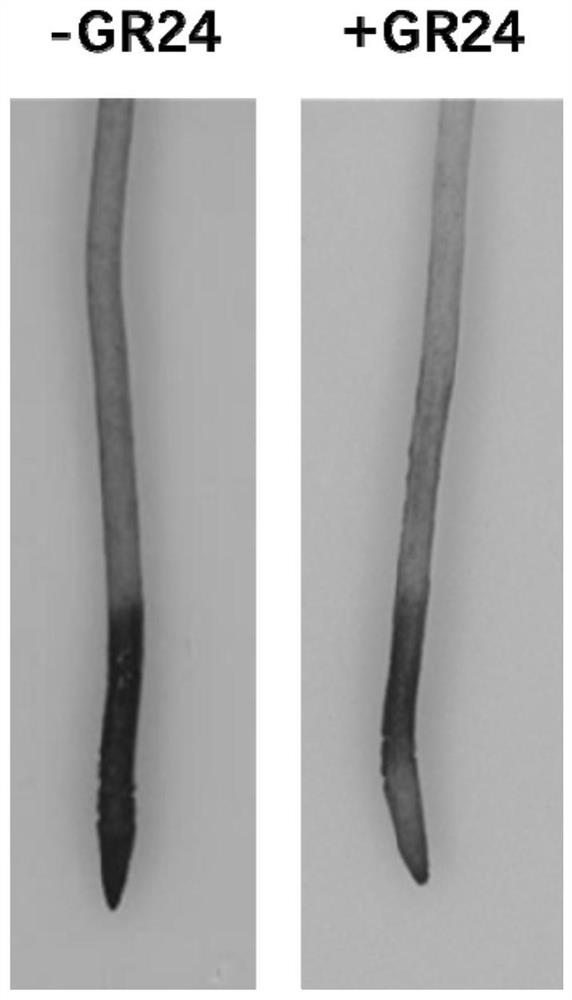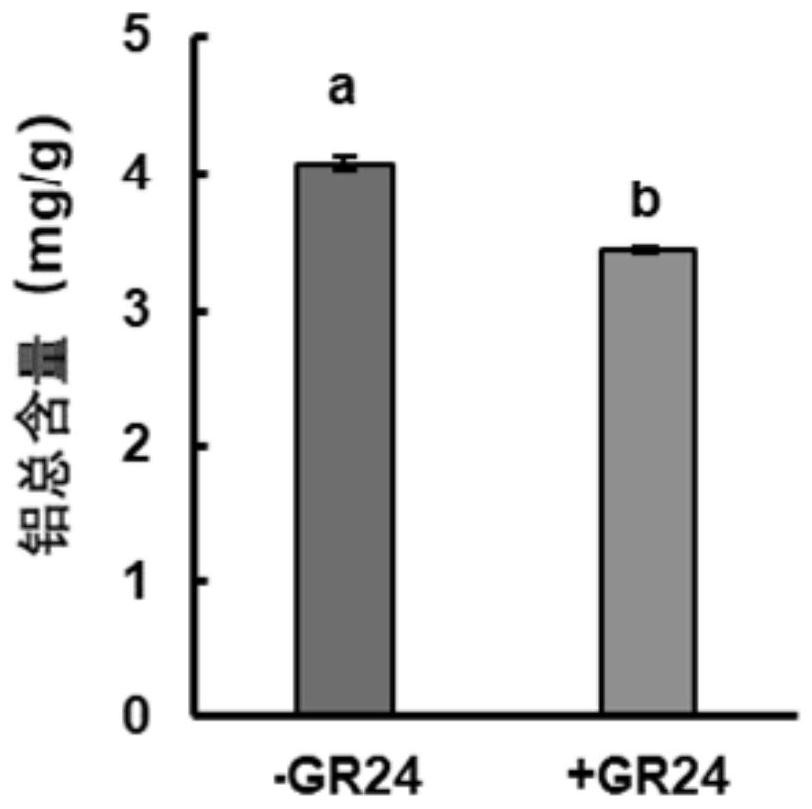Method for enhancing aluminum resistance of peas
A pea, aluminum-resistant technology, applied in the field of planting, can solve the problems of limiting crop growth, reducing crop yield, impact, etc., to achieve the effects of alleviating aluminum toxicity, reducing aluminum accumulation, and reducing the rate of programmed cell death
- Summary
- Abstract
- Description
- Claims
- Application Information
AI Technical Summary
Problems solved by technology
Method used
Image
Examples
Embodiment 1
[0019] 1) Seed soaking and accelerating germination: Soak peas in 7.5% NaClO for 30 minutes to disinfect and accelerate germination, then wash 5 times with sterile ultrapure water, once every 5 minutes, and wash them in 0.5mmol / L CaCl after removing impurities. 2 Seeds soaked in the solution for 10 hours, kept at 24°C and dark room conditions;
[0020] 2) Aeroponics: Put the fully imbibed pea seeds into the aeroponic box, and add 0.5mmol / LCaCl to the aeroponic box 2 The solution was submerged in the aeroponic device, and the atomized culture was carried out for 48 hours. When CaCl 2 When the solution is not enough, it needs to be filled up, CaCl 2 The solution is replaced every 24 hours;
[0021] 3) Hydroponics: After pea seeds germinate, select seedlings with uniform root length and height of 4±0.1cm, prepare 1 / 4 concentration of Hoagland nutrient solution as culture solution A, and immerse the roots of the seedlings in the culture solution; and culture solution A After so...
Embodiment 2
[0024] 1) Seed soaking and accelerating germination: Soak peas in 7.5% NaClO for 30 minutes to disinfect and accelerate germination, then wash 5 times with sterile ultrapure water, once every 5 minutes, and wash them in 0.5mmol / L CaCl after removing impurities. 2 Seeds soaked in the solution for 10 hours, kept at 24°C and dark room conditions;
[0025] 2) Aeroponics: Put the fully imbibed pea seeds into the aeroponic box, and add 0.5mmol / LCaCl to the aeroponic box 2 The solution was submerged in the aeroponic device, and the atomized culture was carried out for 48 hours. When CaCl 2 When the solution is not enough, it needs to be filled up, CaCl 2 The solution is replaced every 24 hours;
[0026] 3) Hydroponics: After pea seeds germinate, select seedlings with uniform root length and height of 4±0.1cm, prepare 1 / 4 concentration of Hoagland nutrient solution as culture solution A, and immerse the roots of the seedlings in the culture solution; and culture solution A After so...
Embodiment 3
[0029] 1) Seed soaking and accelerating germination: Soak peas in 7.5% NaClO for 30 minutes to disinfect and accelerate germination, then wash 5 times with sterile ultrapure water, once every 5 minutes, and wash them in 0.5mmol / L CaCl after removing impurities. 2 Seeds soaked in the solution for 10 hours, kept at 24°C and dark room conditions;
[0030] 2) Aeroponics: Put the fully imbibed pea seeds into the aeroponic box, and add 0.5mmol / LCaCl to the aeroponic box 2 The solution was submerged in the aeroponic device, and the atomized culture was carried out for 48 hours. When CaCl 2 When the solution is not enough, it needs to be filled up, CaCl 2 The solution is replaced every 24 hours;
[0031] 3) Hydroponics: After pea seeds germinate, select seedlings with uniform root length and height of 4±0.1cm, prepare 1 / 4 concentration of Hoagland nutrient solution as culture solution A, and immerse the roots of the seedlings in the culture solution; and culture solution A After so...
PUM
 Login to View More
Login to View More Abstract
Description
Claims
Application Information
 Login to View More
Login to View More - R&D
- Intellectual Property
- Life Sciences
- Materials
- Tech Scout
- Unparalleled Data Quality
- Higher Quality Content
- 60% Fewer Hallucinations
Browse by: Latest US Patents, China's latest patents, Technical Efficacy Thesaurus, Application Domain, Technology Topic, Popular Technical Reports.
© 2025 PatSnap. All rights reserved.Legal|Privacy policy|Modern Slavery Act Transparency Statement|Sitemap|About US| Contact US: help@patsnap.com



